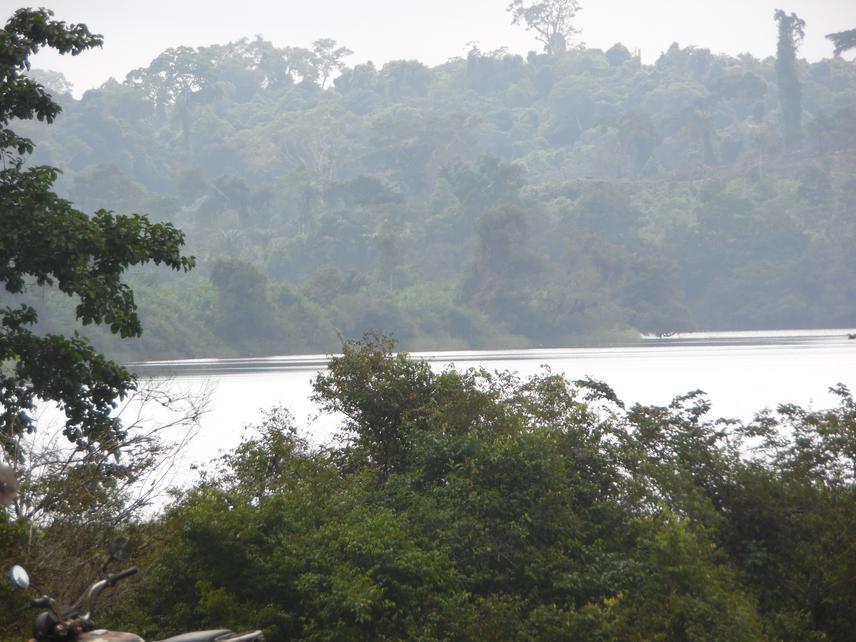Pierre A. Mvogo Ndongo
Other projects
11 May 2015
Comparative Study of Populations of Mangrove Crabs from Six Mangrove Ecosystems in Cameroon: Implications for Conservation
21 Feb 2018
Conservation of the Re-Discovered Endangered Freshwater Crab Louisea balssi on Mount Manengouba in the Cameroon Highlands
24 Sep 2019
Conservation and Assessment of the Extinction Risk of a Threatened New Species of Endemic Freshwater Crab Louisea nkongsamba, from Mt. Nlonako, Cameroon
29 Sep 2021
Conservation and Monitoring Strategies of the Rare Endemic and Threatened Freshwater Crab Louisea yabassi from the Ebo Forest near Yabassi in Cameroon
The overall aim is to save a threatened decapod crustacean species, Louisea edeaensis (Bott, 1969) from Bedimet island of Lake Ossa from extinction. This will permit to keep healthy its natural habitat and then a reassessment of its conservation status of under the IUCN Red List criteria.

Lake Ossa.
The potamonautid freshwaters crab genus Louisea Cumberlidge, 1994 is currently represented by two species known only from southern Cameroon (Cumberlidge 1994, 1999): L. balssi (Bott, 1959) and Louisea edeaensis (Bott, 1969). All known specimens of these two species had been collected by German researchers between 1900 and 1910. More recently, the conservation status of both species was assessed using the IUCN’s Red List protocols (IUCN 2003, Cumberlidge et al. 2009). Louisea edeaensis and L. balssi were designated as endangered (EN).
Thanks to 1st Rufford Small Grant (1st RSG) in August 2015 and Congo Basin Grant in January 2016, we re-discovered a small population of the rare and endangered freshwater crab Louisea edeaensis in Bedimet island of Lake Ossa in Littoral-Cameroon. This species was first collected in 1910 from Edéa, Littoral-Cameroon, but was only described 59 years later as Globonautes macropus edeaensis by Bott (1969) and later raised to full specific status as Louisea edeaensis by Cumberlidge (1994). From 1stRSG, education of the local people was identified as a necessary component of a conservation action plan to protect and conserve wetland and mangrove in Cameroon.
A conservation action plan of L. edeaensis is going to be developed based on first-time data on its population levels and trends, its breeding needs, and its habitat preferences. Data will also be collected on the long-term threats to L. edeaensis from agricultural pollution and from habitat destruction despite its location in a protected area. An on-going education component in the proposed project will be done throughout the year in order to keep healthy the habitat of L. edeaensis and promote its efficient conservation. The targets of the educational messaging are the local people who are owners (their family has live on the target Island in the pass) on Bedimet Island in Lake Ossa where L. edeaensis was re-discovered. Those persons will mainly educate of an understanding the importance of conserving an endengered species from extinction. The educational workshops sessions will be necessary in contributing of the conservation of other endangered and non- endangered fauna and flora from Lake Ossa wetland complex. Since the Lake Ossa Wetland complex is a biodiversity hotspot in the coastal zone of Cameroon that supports endangered West African manatees, birdlife, freshwater turtles, plants, and so on.